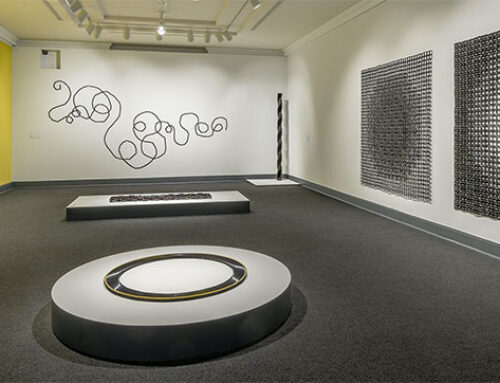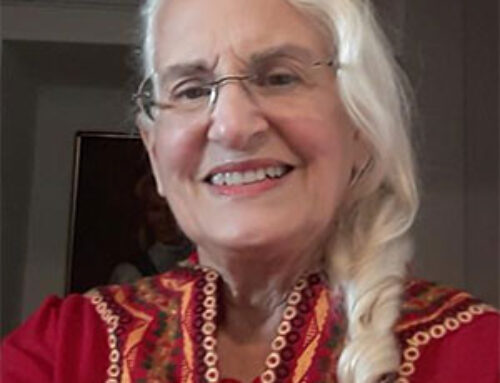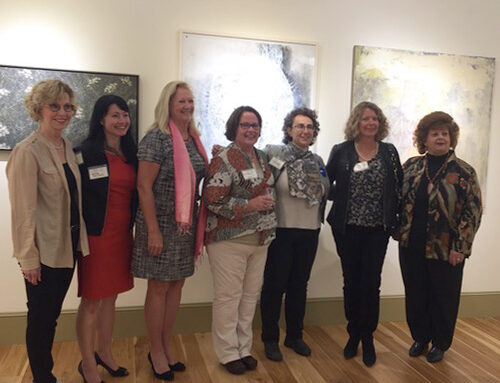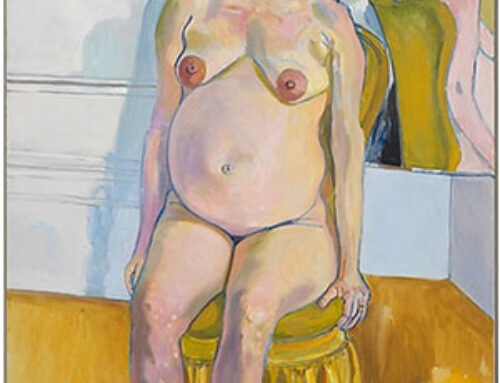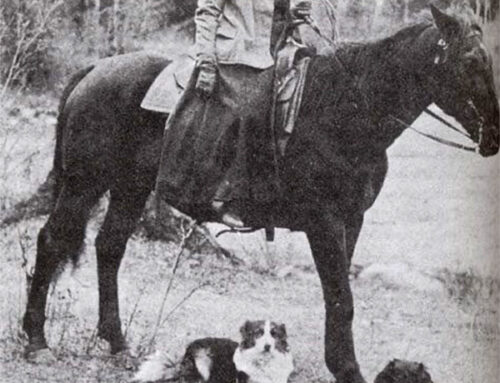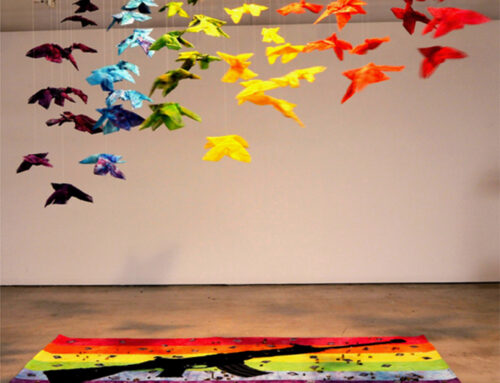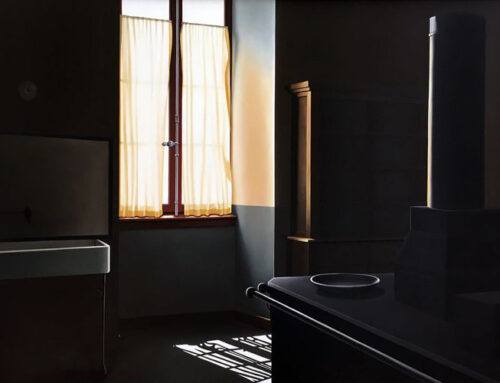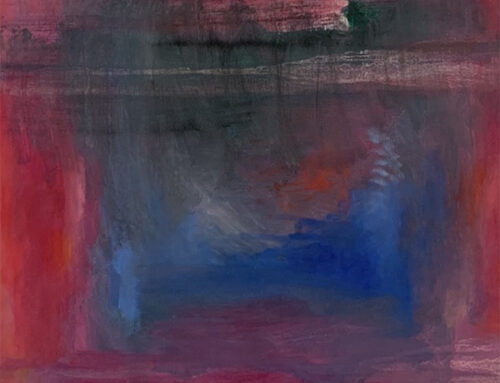Mary Alice Orito
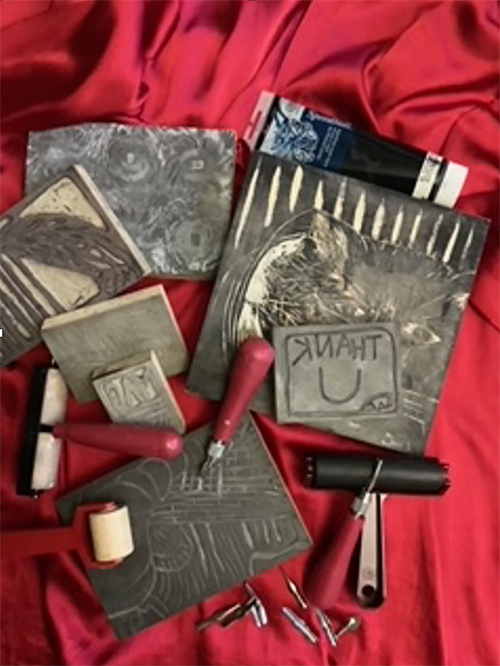
Step #1: Knowing next to nothing about printing, I hit Google and YouTube for guidance. Lino prints seemed doable. The most important news for me was that I could hand rub the plates as I did not have a printing press.
Step #2: I checked out Blick (www.dickblick.com) and immediately bought rollers, ‘Speedball’ linoleum blocks in a variety of sizes, rollers in a couple of widths as I actually did not know what I would be carving, ‘Speedball” tubes of printing ink, carving tools, and the right type of paper.
Step #3#: I began the mental process of understanding the carved sections that were not the ink sections. It’s kind of like the opposite of drawing.
Step #4: Still mentally baffled, I simply drew what I wanted and carved out the white parts.

Cut and torn paper, sewn with waxed thread, Lino print, Japanese print paper as ‘mat
Step #5: I rolled the ink out on a metal pie tray and filled the rollers with ink and then rolled the white parts of the block.
Step #6: I positioned the paper on the block and, using a clean roller, rolled back and forth and side to side. I also rubbed with my hand for additional saturation.
Step #7: I lifted a corner and peaked-YEAH!!!
Step #8: I carefully removed the paper and clipped one corner to my drying set-up for a 24-hour drying period.
My initial thinking focused on wanting something that had an ‘Asian’ feel. Somewhere, I saw a framed watercolor that had four different jacquard fabrics acting as a mat. Lacking the resource, I thought of Japanese printed paper. One of my signature effects is tearing or cutting paper and then sewing it to paper. The completed process became the finished piece selected by Kim Conaty, curator of the Stevens and Ann Ames Drawings and Prints at the Whitney Museum.



